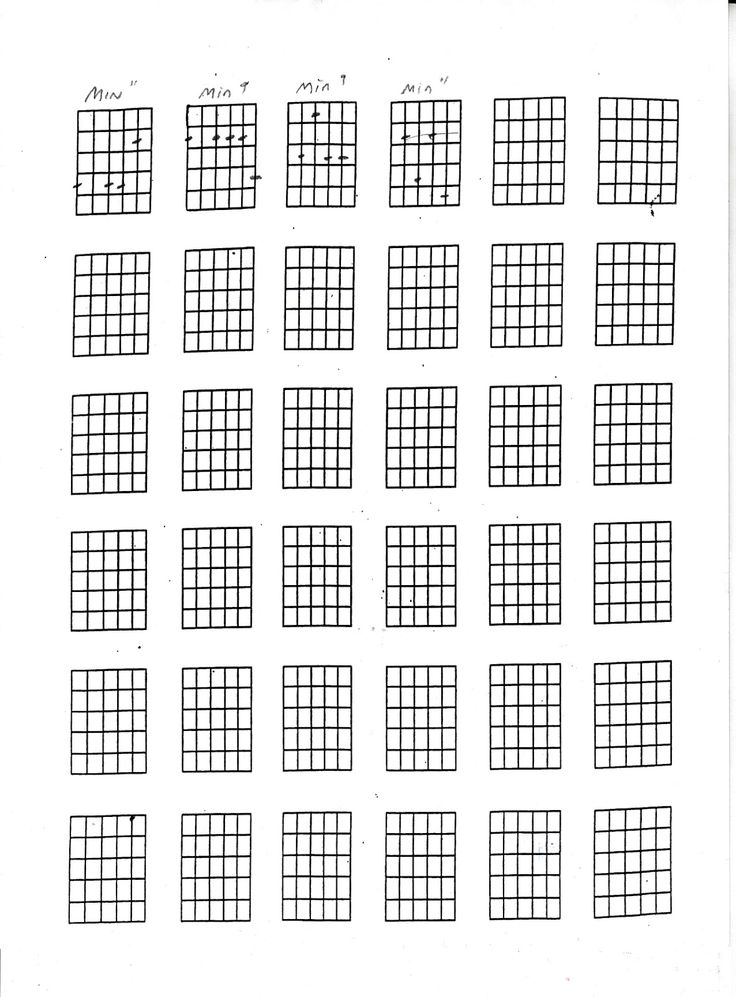
There are tree common stages of development. Playing chords efectively taes time, and te leaing process requires practice. If you're not hearing all the notes clearly, keep working to cmve yom fngers and adjust yom had position on the intended frets to make the sound shine through yom instument. When chaging chords, mute the stings by lifing your fmgers from the stings, but still touching tem, to hold tem still 8you slide to te next chord. You're working to put tose notes on the fets make sme that the listener ca hea them! While foring the chords, make sme that yom fngers are as close to te intended fets 8 possible. A common tendency is to hit the outermost notes wit the most force, resulting in a thinner textme. l When you're using yom fmgers to pluck chords, take cae to balace the level of each chord tone. When stmming across the stings, make te speed of your stroke fast enough to give te illusion of one simultaneous sound made up of all the chord voices. Focus your strumming (or fmger-picking attacks) on te indicated stings. Use the edges of your fmgers of your fetting had to mute unwated strings.

Some tips for geting a good chord sound: Tae special care to play te notes requested-and to Ic0vc ouI,or mute te strings wit the X symbol above them. Strive to play tese chords with a solid time feel, a fll tone, and attcks wit your "picking hand" tat match te level of intensity of the music you're atempting to play. With time, you will hea te chords before you play them. This material will help you to map out te sounds on your fetboard. These chord blocks will show you te right shapes, but as a musicia, you owe it to your audience and yourself to hear the music before you play it. The following diagras indicate what notes you should use for each chord voicing. Diatonic Exercises 30 m Major on 30 Major 31 32 33 F Harmonic Minor 34 F M e lodc Minor 35 G Major 6 Bebop Scal e 36 G Minor 6 Bebop Scal e 37 About the Author 38 iv Introduction The Lcr|Icc10 OuII0r ChorJIcIIon0r) is a resource for 7t-chord voicings ad oter fequently encountered jazz chord shapes on te fretboard. Quartal Voicings Exercises 28 C Dorian Voicings 28 7. Inversions (each 19 Major 7 19 Dominant 7 20 Minor 7 21 Minor 75 23 Major 6 24 Minor 6 25 Part II. Triads over Bass-Note Voicings with Roots on _ 16 VI I 16 VIlli 16 Oter Common Voicings : (III/I, 11/1, IIV /1, VI/I, VIlli) 17 p. Major 6, 13 Minor 6, Diminished 7) Root 7 3 (Major 7, Dominant 7, Minor 7, Minor 75. Guide Tone Chords 13 Root 3 7 (Major 7, Dominant 7, Minor 7, Minor 75. Moveable 7th Chord Shapes 2 (each ( Q(() Major 7 2 Dominant 7 3 Minor 7 3 Minor 75 4 Major 6 5 Minor 6 5 Diminished 7 6 Dominant 9 7 Mor 9 7 Minor 11 8 Dominant 13 8 2.


a la818 MILWAUKE WIINaiN 113 Vislt Hal Leonard Online at Copyright 2007 Berklee Press All Rights Reserved No part of this publication may be reproduced in any form or by any means without the prior written permission of the Publisher Contents Introduction iv Part I. Green Senior Designer: Robert Heath Editorial Assistants: Rajasri Mallikarjuna, Jonathan Whalen ISBN-13: 978-0-87639-079-5 ISBN-10: 0-87639-079-3 DI.TJgUID Bberklee press 1140 Boylston Street Boston, MA 02215-3693 USA (617) 747-2146 Visit Berklee Press Online at ww. HAL LEONARD, C0RP0RA'I0N 7777 W lUEMOUND RD. Berklee ress Vice President: Dave Kusek Dean of Continuing Education: Debbie Cavalier Managing Editor: Jonathan Feist Director of Business Affairs: Robert F.


 0 kommentar(er)
0 kommentar(er)
